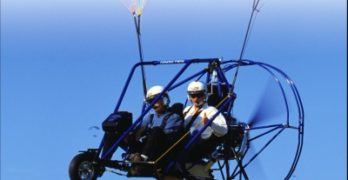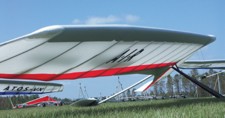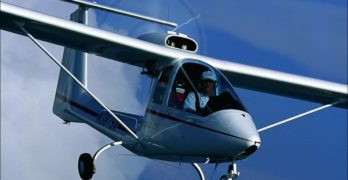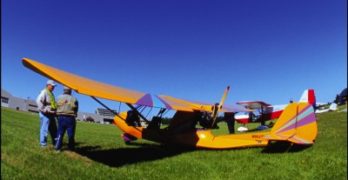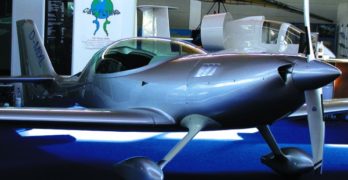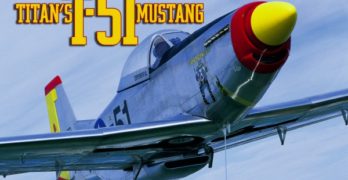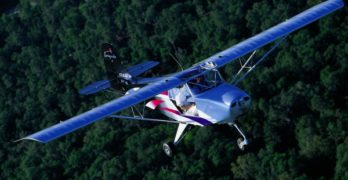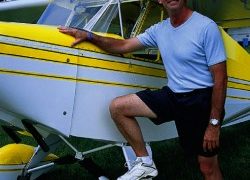September 2004-Rule effective
Current pilots can begin exercising privileges of sport pilot certificate.
Non-current pilots can begin exercising privileges of sport pilot certificate after obtaining flight review and currency requirements for the category of aircraft they will fly as sport pilots.
Ultralights pilots must be registered with an exemptionholding organization (EAA, ASC, USUA) to receive full credit for ultralight knowledge and training. October 1 2004
Ultralight owners can apply for an N-number for previously unregistered/uncertificated vehicles. Application form will be available online at http://afs600.faa.gov. Sometime during October 2004
Practical test standards (PTS) for flight testing and knowledge (written) tests will be available (for study).
Guidelines for repairman training will be available.
Designated pilot examiner (DPE) and designated airworthiness representative (DAR) applications will be accepted.
November/December 2004
First FAA DAR training courses will be conducted.
January 2005
FAA ready to issue:
Sport pilot certificates.
Sport pilot certified flight instructor (CFI) certificate
Private pilot weight-shift and powered parachute ratings.
Search Results for : flight design ct
Not finding exactly what you expected? Try our advanced search option.
Select a manufacturer to go straight to all our content about that manufacturer.
Select an aircraft model to go straight to all our content about that model.
Transitioning?
A primer for ultralight pilots transitioning themselves and their machines
Ultralight pilots flying legal Part 103 single-place ultralights are not affected by the sport pilot/light-sport aircraft rule. The rules of FAR Part 103 remain the same. Current and future ultralight pilots are free to enjoy those freedoms. If they choose to become sport pilots at a later date, any training logged as a registered ultralight pilot can be counted toward the training requirements for a sport pilot certificate. The rule pertaining to legal ultralight vehicles also do not change.
The sport pilot and lightsport aircraft (SP/LSA) rule is now officially part of the American aviation culture. Some of us who fly Part 103-legal ultralights will continue to be ultralight pilots. Others who fly two-place or overweight machines must eventually transition themselves to sport pilot status and their machines to light-sport aircraft status to remain legal.
With the rule now final, we’ll address the requirements for those ultralight pilots and instructors wishing to transition themselves and their machines.
Tuning Up Skystar
SkyStar reorganizes to offer ultralights, homebuilts and special LSAs under “one” roof.
For the new SkyStar Aircraft Corp., the light at the end of the proverbial tunnel is not a locomotive; it’s the coming of a bright new day in light aviation. As the publication of the final sport pilot and light-sport aircraft (SP/LSA) rule looms on the horizon, business is looking better for SkyStar and most other manufacturers and suppliers of light aviation equipment.
The two-place SkyStar Series 7 will have multiple personalities. SkyStar Sport Planes will manufacture a variation of this model as a ready-to-fly special LSA. Depending on the parameters of the final rule, SkyStar Sport Planes may sell an experimental LSA kit (more than 51-percent complete). When flown as an LSA, the Series 7 will be limited to the Rotax 912S engine as its powerplant. SkyStar Aircraft will continue to offer the Series 7 as a 51- percent amateur-built kit, with a variety of engine options, including the 914 Turbo version shown here.
A-I-R’s ATOS VX
By any measure AIR’s ATOS VX is a stunning work of art. The 46-foot span hang glider or nanolight-trike wing is a truly beautiful construction that shows the artistic and engineering prowess of designer Felix Ruhle and his A-I-R company of Germany. I flew this “rigid wing” glider in Florida before the Sebring U.S. Sport Aviation Expo last October. My first flight was a tandem with Felix and then I soloed this big wing built for two-place “tandem” operations. Look for an article in the 4/05 issue of Kitplanes magazine.
Shooting Across the Sky
Italy’s Sky Arrow makes its mark in the United States
Just as it is home to many fine sports cars, Italy is also home to some beautiful light aircraft-the Sky Arrow being one. The tandem two-seat airplane is designed and manufactured there by Iniziative Industriali Italiane S.p.A (III). Formerly known as Meteor, the company was started in 1947 and also manufactures gliders, airplanes, and remotely piloted vehicles.
Pacific Aerosystem Inc., of San Diego, California, is the United States importer of the Sky Arrow line. With more than 200 Sky Arrows flying worldwide and 25 in the United States, III is an experienced manufacturer and able to meet customer needs, reports Pacific Aerosystem, an important factor to consider when choosing an aircraft.
Currently, Pacific Aerosystem sells four ready-to-fly versions of the Sky Arrow. A kit version can be built under the experimental amateurbuilt rule. Powerplants and instrumentation delineate the models. An 80-hp Rotax 912 powers the 650 TCN and 560 T models.
The Sport Pilot Rule
Increased benefits come with some costs and responsibility
Are you excited by the proposed sport pilot/lightsport aircraft (SP/LSA) rule? Many experts say the long-awaited rule will offer aviation its best growth opportunity since the 1940s. Do you wonder if any new regulation can be that helpful?
Some pilots remain apprehensive about SP/LSA. Naturally, those who will use the regulation to begin or expand their recreational flying welcome it. Some who don’t feel the need for government involvement are less sure.
Like most privileges, the new rule comes with some cost and additional requirements. Pilots of all stripes will grapple with those requirements, but it is important not to lose sight of what makes this a great piece of regulation. On this rare occasion, I find myself anticipating, even welcoming, a new federal rule.
The Costs
The proposed SP/LSA rule will reduce operating costs for many pilots, but ultralight pilots will experience some initial transition costs.
Europe’s Biggest Light Aircraft Show
Light-sport aircraft are a major part of Aero 2003
My first visit to the Aero show was in 2001. For years earlier, I’d been aware of this event in the far south of Germany, in the resort town of Friedrichshafen. After attending the show two years ago, I became aware of how important it would be to light-sport aircraft.
Because Aero runs on alternate years, like many air shows in Europe, I determined I was going again in 2003, no matter what. Once again it was a worthwhile trip.
Friedrichshafen sits on the northern shore of a giant lake called Bodensee or Lake Constance. Across the body of water to the south lies Switzerland. Bodensee’s eastern edge borders Austria. The tourist attractions generated by the big lake come with picturesque scenes in many directions.
Friedrichshafen is also home to the Zeppelin airship company. Famous for its creation of the Hindenburg, Zeppelin is the oldest continuously operating airship builder.
Relive the World War II fighter experience
The Ending
In the remainder of this article I’ll tell you what I thought of this new offering from Titan Aircraft, the successful builder of the Tornado line of ultralights and light aircraft. But I must be forthright and tell you my hour and a quarter flight with this new airplane ended with a landing on its belly.
I rush to say it wasn’t simple forgetfulness; I didn’t forget to put the gear down. Instead, a simple mechanical problem in this prototype T-51 prevented the retractable gear from fully extending. The gear was partially down, but it refused to lock in position. A post-incident investigation revealed that a tiny activation pin broke off the gear-down microswitch when I tried to activate it with too forceful a movement. Because the micro-switch didn’t activate, the hydraulic system didn’t push the gear legs down all the way.
Considering the gear was down only about 50 percent, according to Titan President John Williams who was watching from the ground, my touch down was remarkably smooth, and the T-51 rolled for quite a few yards.
On An Escapade
Just Aircraft’s Excapade … certificated in England and ready for sport pilots!
Southwestern Idaho has long been a hub of aircraft activity. With ranches and towns settled in great distances, it’s not surprising that aviation, once an established mode of transportation, quickly became popular in that part of the west. It’s also not surprising, then, that the area has been a hub of aircraft building activity. Here’s the story of one aircraft that’s evolved from that heritage.
In 1983, a two-seat, steel tube and fabric aircraft called the Avid Flyer made its first appearance at EAA’s annual convention. Describing the new design in the October 1983 issue of EAA Sport Aviation, then editor Jack Cox wrote, “Dan Denney of Boise, Idaho, was the person with the idea from which sprang the Avid Flyer. He wanted ‘something between ultralights and homebuilts’|(and) Dan had a friend uniquely qualified to transform that (idea) into|an airplane, Dean Wilson.”
What Denney and Wilson demonstrated to the fly-in crowd that year might be called the forerunner of the pending light-sport aircraft category|even at a time when ultralights were still gaining their foothold.
Dan Ward’s Dakota Hawk
Dan Ward wanted to fly even as a little boy. He recalls his mother some years ago showing him a note he’d written in first grade detailing how he wanted to “grow up and be a pilot.” But, like many other would-be pilots, the constraints of time, money, and family responsibilities presented obstacles that kept him from reaching his goal.
In 1991, though, his wife, Dolores, told him he should go for it. Dan laughingly said he thinks she was tired of listening to him whine about wanting to fly. “Our daughters were getting older, so there was time in my schedule to start flying lessons.” In 1993, he earned his pilot certificate, and he knew his next goal was to build an airplane.
Dan then began researching aircraft designs. At EAA Oshkosh 1995, he was intently shopping. After taking a flight in the all-wood Dakota Hawk, he made his decision.
- « Previous Page
- 1
- …
- 130
- 131
- 132
- 133
- 134
- …
- 145
- Next Page »


